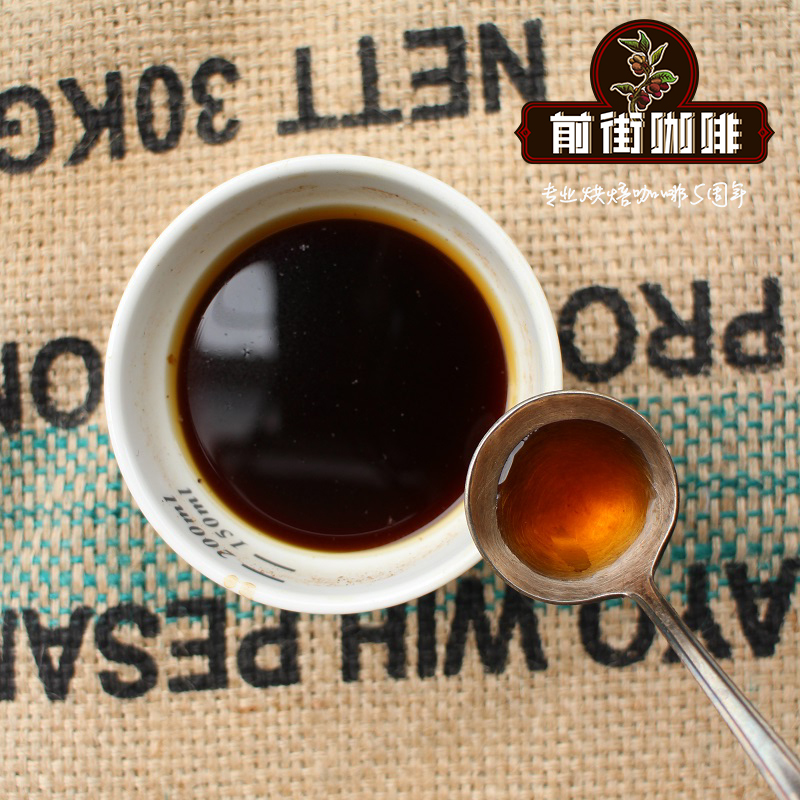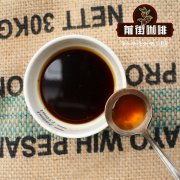How to drink Latin American Coffee Latin American Coffee cultivation Culture Latin American Coffee characteristics

Professional coffee knowledge exchange more coffee bean information please follow the coffee workshop (Wechat official account cafe_style)
The coffee growing belt is distributed between the latitudes of 25 degrees south and north. The countries located in this growth zone include not only Ethiopia, Yemen and Kenya, but also the vast expanse of Latin America. Arabica is a high-altitude variety, which is the mainstream variety of coffee, while there are many highlands ranging from 60 to 1500 meters in Latin America, coupled with sufficient sunshine, which is suitable for Arabica species to grow. A coffee plant can be harvested after four years, and then it can be produced continuously for several decades. It is a cash crop with high return on investment. However, coffee is a crop that requires a lot of labor. During the colonial period, the owners of the coffee plantations were all local oligarchs and big landlords, and the source of labor was aborigines or slaves. At the end of the 19th century, in addition to the traditional large coffee gardens, small family coffee farmers began to appear, while there were also well-funded multinational corporations scrambling to eat coffee cakes. Behind the coffee economy in Latin America is a history of cheap labor full of exploitation, injustice and monopoly.
Today, Latin America is one of the most important coffee producing areas in the world, and coffee has become a specialty of Latin America. According to statistics, coffee plantations account for at least 45% of the arable land in Latin America today. Because of its geographical location, coffee beans from Latin America are mainly sold to the United States, followed by Europe and Asia. Generally speaking, coffee producing areas are mostly located in developing countries, while coffee consuming countries are the so-called first world. Although Latin America is a coffee producer, Latinos are also coffee lovers. In addition to the common American style, mocha, latte, cappuccino and espresso, each region also has its own drinking methods and terms, which leads to a unique coffee culture.
Brazil has the highest coffee production in the world, and its coffee consumption is among the top 10 in the world. Brazilians regard coffee as a panacea for social communication, and they often drink cup after cup of espresso unwittingly at various parties. Mexicans love to drink cappuccino, but its milk ratio is as high as 80% and it is no longer the original practice of serving it in an Irish glass. A popular "caf é de olla" in Mexico is to heat the water in a pottery pot, boil the water with cinnamon and sugar bricks and boil for another 20 minutes, or add fennel as you like, then pour in the freshly ground coffee powder, turn off the heat as soon as it boils, let it taste for five minutes, and finally filter the residue into a clay cup.
Colombian coffee has been well received and has gained international popularity with the brand "Juan Valdez". Juan Vades is a character created by the Colombian Coffee Farmers Association. He is a farmer with a mustache and a small donkey. He looks very kind. Colombians drink cortado coffee most often, with half coffee and half milk. In addition, Colombia's "caf é chaqueta" is similar to Mexico's "pottery pot coffee", putting sugar bricks in boiling water and adding coffee powder as if to put a sweet coat on the coffee.
Jamaica's Blue Mountain Coffee is one of the common options in cafes around the world, while other places such as Cuba, Dominica, Guatemala, Honduras, Nicaragua, El Salvador, Costa Rica, Panama, Venezuela and Peru also add a variety of drinking methods to the production of high-quality coffee.
Guatemala only began to produce coffee in the middle of the 19th century, and because of its suitable climate and geology, it was able to produce high-quality coffee.
Cafe culture has been popular in Latin America for more than a hundred years. Like Europe, cafes in Latin America are also places where poets and poets discuss literature and politics, giving birth to revolutionary ideas and concepts of freedom, and there are still many cafes with a history of more than a century. For example: coffee é Tortoni in Buenos Aires, Caf é Brasilero in Montevideo, Columbus Caf é in Rio de Janeiro (Confeitaria Colombo), Caf é de Tacuba in Mexico City.
If African coffee has a good berry flavor and Asian coffee has obvious herbal flavor, then Latin American coffee is more balanced and changeable.
Qianjie recommended cooking data:
V60According 88-90 ℃ / 1 15 / time two minutes
Important Notice :
前街咖啡 FrontStreet Coffee has moved to new addredd:
FrontStreet Coffee Address: 315,Donghua East Road,GuangZhou
Tel:020 38364473
- Prev

How do you drink Latin American coffee? What are the characteristics of Latin American coffee?
Professional coffee knowledge exchange more coffee bean information Please pay attention to the coffee workshop (Wechat official account cafe_style) with the improvement of the quality of life, enjoying coffee has become a fashion of life today, as for how to taste a cup of coffee is a profound knowledge, what is the difference between the knowledge of coffee and the taste of the place where it comes from? Coffee should be the most common pick-me-up in the world.
- Next

Latin American Coffee Story the flavor characteristics of Latin American coffee how to drink Latin American coffee
Professional coffee knowledge exchange more information about coffee beans Please follow the coffee workshop (Wechat official account cafe_style) Coffee tree is a genus of Rubiaceae in botany. Coffee trees are native to subtropical Africa and some islands in southern Asia. In the 16th and 17th centuries, coffee was introduced into Europe through the merchants of Venice and the Dutch hegemony of the sea.
Related
- What documents do you need to go through to open a coffee shop? coffee shop coffee shop certificate processing process
- How to purchase Coffee beans in small Cafe how to choose a suitable supplier for domestic Coffee supply Company
- How to drink Starbucks Fragrance White Coffee? how to make Australian White Coffee? what Italian coffee beans are recommended?
- The Story of Flora Coffee: the name of Flora Coffee Bean and the implication of the Flowers on Florna Coffee
- How much does a cup of coffee cost? How much is the profit of a cup of coffee? What is the profit of the coffee shop in a year?
- Yunnan small Coffee, known as "fragrant Coffee", introduces the characteristics of Alpine Arabica Coffee producing areas in Yunnan, China
- 2023 latest Starbucks full menu price list how much is a cup of Starbucks coffee what is better to drink the most popular hot and cold drinks recommended
- Starbucks different kinds of Coffee Price list Starbucks menu 2023 Top Ten Best drinks in Starbucks
- Starbucks Spring praise Comprehensive matching Coffee Bean theme Story Packaging implication and taste description
- The cost of a cup of coffee latte American coffee cost price and selling price

